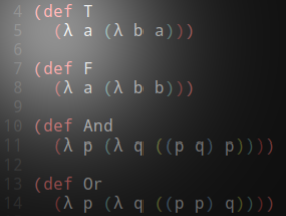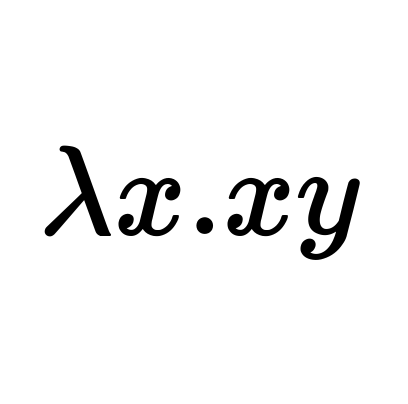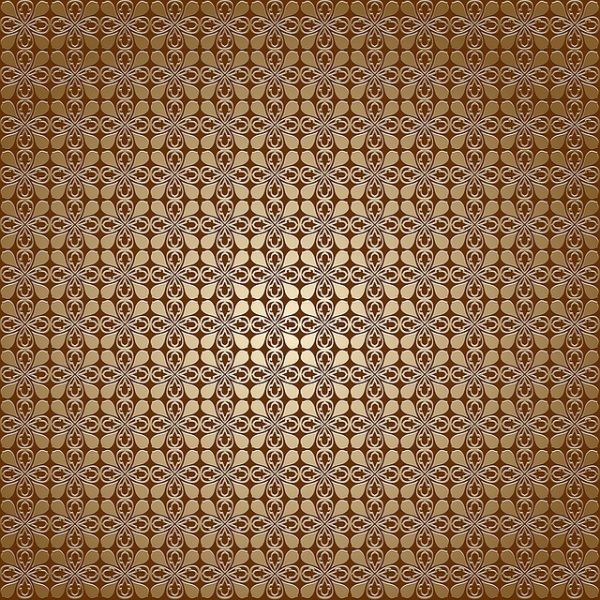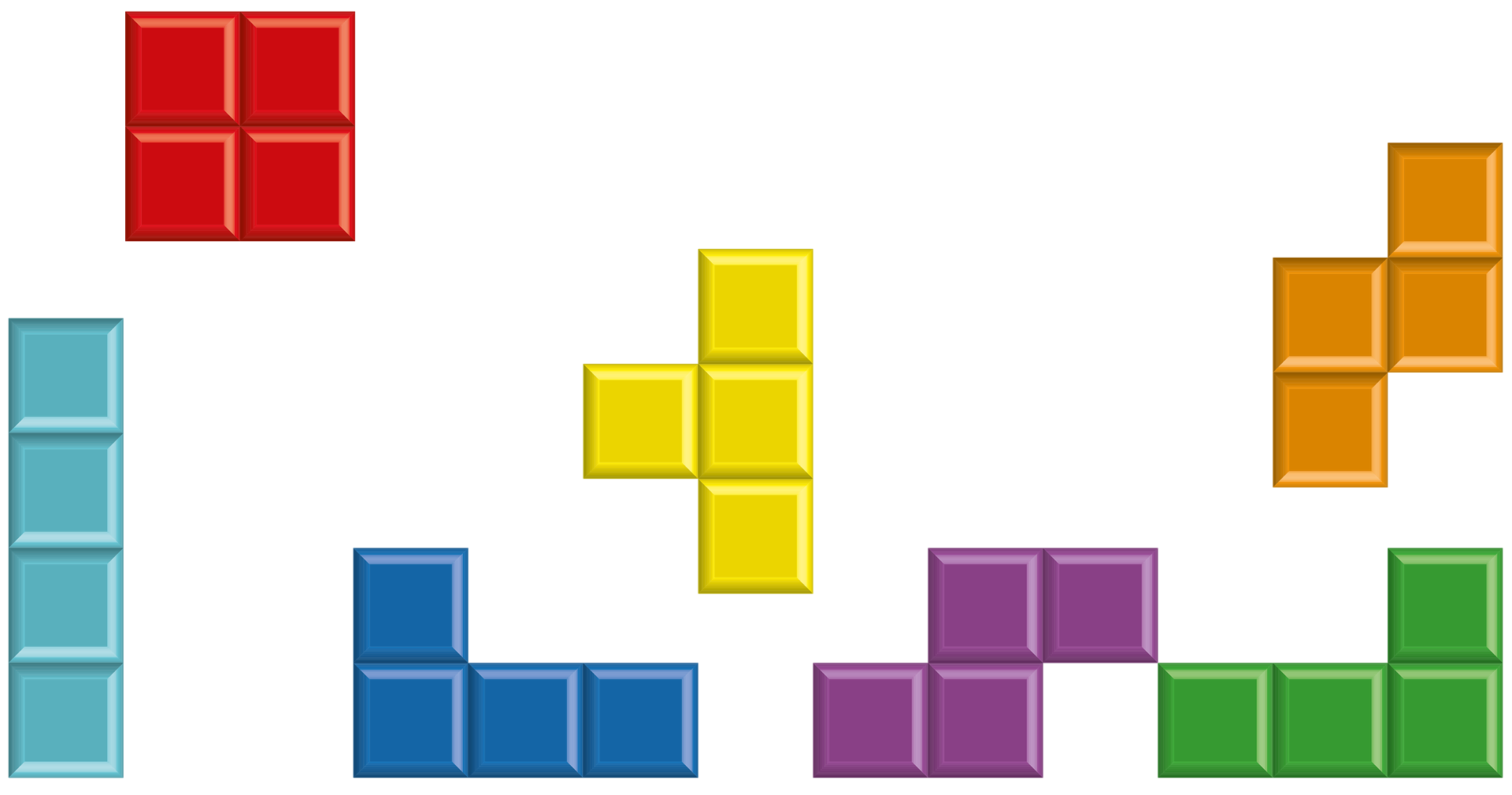CAREER OPEN HOUSE | 31st Jan, 7pm
We’re hiring Java and .NET Craftspeople in London & Barcelona. Come and meet us at our Career Open House on 31st January to learn more.
Lambda Calculus in Clojure (Part 2)
- By Sergio Rodrigo Royo
- Posted 25 Jan 2018
- functional programming lambda calculus clojure
In Part 1, we built a boolean algebra using Church Encoding. In this post, we are going to reuse some of the previous work to build a similar algebra, this time for numerals.
Church numerals
In the algebra we built in the previous post, Church booleans were encoded using higher-order functions. The way Church numerals are represented is similar: given a number n and a function f, the Church numeral of n is the number of times f encapsulates n. For example, for n = 3, the function f encapsulates n three times:
λf.λx.f(f(f x))
The general case n would look like this:
λf.λx.f^n x
where f^n = f ∘ f ∘ f ∘ … ∘ f, being f composed n times. f is also known as the successor function.
n = 0 is a special case where we just return the parameter:
λf.λx.x
Church numerals in Clojure
Using the macro we created in Part 1, we can now implement Church numerals in Clojure using a notation close to Lambda Calculus:
(def zero
(λ f (λ x x)))
(def one
(λ f (λ x (f x))))
(def two
(λ f (λ x (f (f x)))))
(def three
(λ f (λ x (f (f (f x))))))
The following numbers are implemented in the same way, composing f n times. But this is not the only way to build Church numerals. As we have seen, f is actually the successor function, which can be defined like:
; λn.λf.λx.f (n f x)
(def succ
(λ n (λ f (λ x (f ((n f) x))))))
The successor of n is a function that:
- takes
f - returns another function that takes
x - applies
fto the result of applyingn ftox. This is a way of generalising thencompositions offthat we have seen in the general casenof the Church numerals.
We can define the numbers of the example above in terms of succ:
; one
(succ zero)
; two
(succ (succ zero))
; three
(succ (succ (succ zero)))
Printing Church numerals
Church numerals, and the functions built around them, can be, sometimes, difficult to visualise. Another thing we can explore in this post is how we can convert Church numerals into string representations. The idea is to consume the expression (which is a combination of functions applied to a parameter) and add the representation of each application:
(def λToStr
(λ f ((f (λ n (format "f(%s)" n))) "n")))
A few examples:
(deftest λ-toStr
(testing "toStr"
(is (= (toStr zero) "λf.λn.(n)"))
(is (= (toStr one) "λf.λn.(f(n))"))
(is (= (toStr two) "λf.λn.(f(f(n)))"))
; three
(is (= (toStr (succ (succ (succ zero)))) "λf.λn.(f(f(f(n))))"))))
Church numerals and integers
For clarity (to avoid calling succ many times), we can add two functions to convert Church numerals to integers, and the other way around. To get a Church numeral from an integer, we can create a recursive function that encapsulates the previous numeral in the successor function, until it reaches 0. This is the same idea as the original definition of Church numerals:
(def fromInt
(λ n
(if (= n 0)
zero
(succ (fromInt (- n 1))))))
For example, we could try to convert 5 into a Church numeral:
(fromInt 5)
This expression will return a Church numeral that can be represented as:
(is (= (toStr (fromInt 5)) "λf.λn.(f(f(f(f(f(n))))))"))
and is also equivalent to:
(succ (succ (succ (succ (succ (zero))))))
The opposite function just consumes the numerals, adding 1 to the result, starting from 0:
(def toInt
(λ f ((f (λ n (+ n 1))) 0)))
A few examples:
(is (= (toInt zero) 0))
(is (= (toInt (succ zero)) 1))
(is (= (toInt one) 1))
(is (= (toInt (succ (succ zero))) 2))
(is (= (toInt two) 2))
Arithmetic operations
Now that we have defined our Church numerals in Clojure, let's define a few operations that will help us implement a simple calculator.
Addition
The first operation that we can define is addition. This operation is quite similar to successor:
; plus = λm.λn.λf.λx.m f (n f x)
(def plus
(λ m (λ n (λ f (λ x ((m f) ((n f) x)))))))
In fact, plus could be implemented in terms of succ:
; plus = λm.λn.n succ m
(def plus
(λ m (λ n ((n succ) m))))
We could say that successor is an special case of addition where m = 1. Similarly, implementing plus in terms of succ applies the succ function n times, starting at m.
A few examples of the plus function:
(testing "addition"
(is (=
(toInt ((plus (fromInt 7)) (fromInt 5)))
12))
(is (=
(toInt ((plus (fromInt 7)) ((plus (fromInt 6)) (fromInt 2))))
15)))
Exponentiation
This operation is actually very similar to the idea behind the definition of Church numerals itself. Given the mathematical function for exp:
exp(m, n) = m^n
As per the original definition of Church numerals and succ, if f^n x = n f x, then we can substitute f = m and x = f to get m^n f = n m f, which can then simplify to m^n = n m:
; λm.λn.n m
(def exp
(λ m (λ n (n m))))
A few examples of the exp function:
(testing "exponentiation"
(is (=
(toInt ((exp (fromInt 2)) (fromInt 3)))
8))
(is (=
(toInt ((exp (fromInt 2)) ((exp (fromInt 2)) (fromInt 3))))
256)))
Multiplication
It follows a similar idea as exponentiation:
mult(m, n) = m * n
If f^(m*n) (x) = (f^n)^m (x), then:
; λm.λn.λf.m (n f)
(def mult
(λ m (λ n (λ f (m (n f))))))
A few examples of the mult function:
(testing "multiplication"
(is (=
(toInt ((mult (fromInt 2)) (fromInt 3)))
6))
(is (=
(toInt ((mult (fromInt 2)) ((mult (fromInt 5)) (fromInt 3))))
30)))
Subtraction
Subtraction follows the same pattern as addition. Given a predecessor function, we define subtraction as:
minus = λm.λn.(n pred) m
The implementation in Clojure is straightforward:
; λm.λn.n pred m
(def minus
(λ m (λ n ((n pred) m))))
A few examples of the minus function:
(testing "subtraction"
(is (=
(toInt ((minus (fromInt 7)) (fromInt 5)))
2))
(is (=
(toInt ((minus (fromInt 7)) ((minus (fromInt 6)) (fromInt 2))))
3)))
The predecessor function is quite complicated compared with the functions described so far:
λn.λf.λx.n (λg.λh.h (g f)) (λu.x) (λu.u)
If Church numerals apply a function n times using the successor function, we could do the reverse reasoning and say that predecessor applies the function n - 1 times. This is achieved by wrapping f and x to skip the first application of f. This way, we get the remaining n - 1 applications. Here is a more detailed explanation.
A few examples of pred:
(testing "predecessor"
(is (= (toInt (pred one)) 0))
(is (= (toInt (pred two)) 1))
(is (= (toInt (pred (succ (succ (succ zero))))) 2))
(is (= (toInt (pred (fromInt 10))) 9)))
A numerals calculator
So far, we have implemented a few basic numeral operations. We can now try to combine them to calculate numeral expressions.
(deftest λ-numeral-expressions
(testing "numeral expressions"
; 3 * (2 + 5) - 2^3 = 13
(is (=
(toInt ((minus ((mult (fromInt 3))
((plus (fromInt 2)) (fromInt 5))))
((exp (fromInt 2)) (fromInt 3))))
13))))
You can find the full source code here.
Conclusion
We have seen how to extend the work we did with booleans, to create a simple numeral calculator. This is a step further to understand Church encoding better, and explore more complex operations. There are even more complex things that might be worth exploring; arithmetic operations such as division or modulo, and new primitive terms such as pairs or lists, that would introduce new challenges in this game of functions with a single parameter.
References
http://blog.errstr.com/2012/01/14/church-encoding/
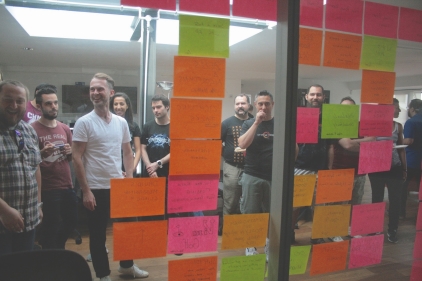
We're hiring!
Enjoying this article?
Related Blogs
Lambda Calculus in Clojure (Part 1)
- Sergio Rodrigo Royo
Lambda Calculus for mortal developers
- Sergio Rodrigo Royo
Lambda World Conference 2017
- Raquel M Carmena
Functions
- Christian Panadero Martinez
Applicative Functors and data validation, part II
- Carlos Morera de la Chica
Recursion
- Christian Panadero Martinez
Recent Blogs
One Year of Codurance Barcelona
- Guillem Fernandez
Functions
- Christian Panadero Martinez
Applicative Functors and data validation, part II
- Carlos Morera de la Chica
Living a Coderetreat as a facilitator
- Raquel M Carmena
Tetris - Failed Experiment: Next Steps
- Dan Cohen
Lambda Calculus in Clojure (Part 1)
- Sergio Rodrigo Royo

Software is our passion.
We are software craftspeople. We build well-crafted software for our clients, we help developers to get better at their craft through training, coaching and mentoring, and we help companies get better at delivering software.
Latest Blogs
One Year of Codurance Barcelona...
Functions
Useful Links
Contact Us
London EC1V 0JR
Phone: +44 207 4902967
Carrer Aragó, 208
08011, Barcelona
Phone: +34 689 723 737
Email: hello@codurance.com

